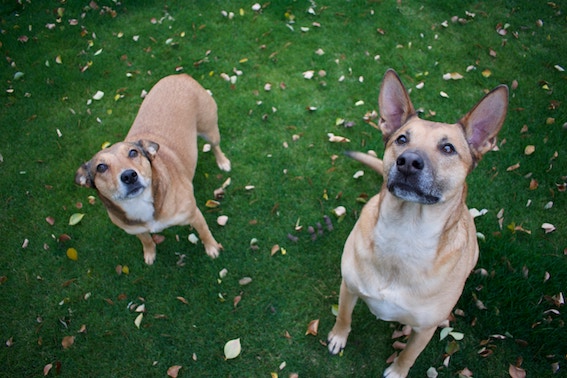The basic education of the dog is a real moment of sharing: the connection between dog and owner, in these moments, is total. It is, in fact, a job based on trust and interrelationship. Nowadays, it is still usual to talk, sometimes, about “dog training” but, in reality, the most correct term would be “dog education” or, for lovers of innovations, “dog training”.
The basic activities of basic dog education are really many: one of them? Teach our dog the main commands, such as “sit,” “come,” “land” and “stay.” And it’s more fun than you might think, for us and for them!
Imagine: you are in a crowded place or, as it happens at this time, on holiday. What could be more pleasant than being able to enjoy a moment of sociality with your best friend, having control of the situation and being sure that it will obey the commands, where it is needed? Indeed, more than half of the owners want to have their animals with them outside the home, and over 43% of owners consider them as genuine family members.
But how to educate the dog? With which commands? Basic education has four commands. Let’s see how to teach them together.
How to teach the dog “Sit”

Teaching the dog the “sit!” command is really useful, especially when, for example, we are in a crowded place, and it is necessary for our four-legged friend to observe a quiet behaviour. Here’s how to train your dog at this command:
- Take some kibble, and call the dog towards you: his attention will fall right on the food you have in your hand!
- While the dog is attracted to what your hand contains, try to keep it close to its nose, within reach of smell. In this moment, move your hand, with food, slightly behind its head, and giving, very gently, the command “sit”. The dog will sit almost immediately.
- As soon as the dog obeys this command, immediately reward it with the food in your hand, and with a few cuddles.
- Repeat the exercise, to strengthen the positive behaviour, at least 5 times every day, especially if it is a puppy.
How to teach the dog “Come”
The “come” command is important because it is part of the basic education of the dog, which should come when the owner turns to it, to avoid a danger, for example. The goal of this command is to make him happy when called, certain to receive a greedy or affectionate award.
For this exercise, get help from a family member, who will have to hold the dog:
- Get away from your best friend by a few meters, continuing to look at him and checking that he too follows you with his eyes;
- “Keeping eye contact, lower and exclaim with joy “come!” Remember to keep your arms open;
- Reward the dog with crisps and cuddles as it approaches;
- Repeat five times each day to strengthen behavior until the result is achieved.

How to teach the dog “Land”
The training of the dog with the “ground” command is a particularly useful exercise on a psychological level: it serves to calm the animal through a position that makes it less aggressive towards other dogs, and that also allows it to bark less. The green light, then, to the teaching of this command to all the most… Exuberant!
- Start from the “sit down!” position and place some kibble right in front of your dog’s nose. Move the hand containing the food from top to bottom;
- Bring your hand to the ground, and place it in the middle of its front paws;
- It remains in this position until the dog lies on the ground and, just as it does, reinforces the behaviour by giving it, calmly and in a firm voice, the “ground” command;
- Reward the dog while on the ground with food and cuddles;
- Repeat five times each day to strengthen behaviour until the result is achieved.
The only clause for this command: the dog must know and obey the command “sitting!”.
How to teach the dog “Stay”
The basic education of the dog also provides for the “remain” command, which is essential, because it can in a timely manner save our four-legged friend from a really dangerous situation, such as a rash road crossing. Here’s how to train the dog in command:
- Place the dog in front of you with the “sit” or “ground” command;
- He backs down, holding his hand open and upright towards his snout, uttering the “remain” command in a sweet but decisive tone, not forgetting to maintain eye contact;
- Wait five seconds; If the dog stands still, return to it first without moving him from the position, you can reward it;
- Gradually increases the waiting time and distance between your hand and it;
- Repeat five times each day to reinforce behaviour until the result is achieved.
The rules we must never forget in dog training
Education through commands can be effective and fun for both us and our four-legged friends, but only if we follow some small rules dedicated to avoiding entering anxiety or fears:
- Never scold the dog if it does not immediately reach the call: being aggressive is certainly not an incentive to obedience
- Do not call the dog only to bring it back to you or to bring it home: try to play, through the controls, rewarding it; otherwise, it could associate your orders at the end of its favourite leisure time;
- If the dog does not obey, do not chase it: it may perceive this action as a threat, or as a fun game, especially if puppy.
We know: polite dogs are the happiest dogs (and owners) who are happier! Teach your dog these commands, which are part of basic education, to live every moment together with others, people or animals that they are, spontaneously and without danger.
